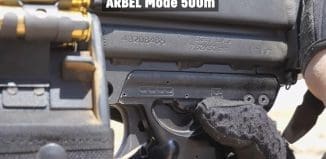Technology transfer: the lowdown
This post is also available in:  עברית (Hebrew)
עברית (Hebrew)

One of the major issues exporters of military and security technology is the demand they are often faced with, to sell not only the items and products, but also the technology behind them. Prospective buyer expect them to transfer the know-how along with the goods, lock stock and barrel. The buyers realize they have the upper hand, and believe the sellers would do anything to secure the deal. They capitalize on their advantage in order to acquire technological independence through the particular provider in the long run, and develop their own local infrastructure too. For them, the deal is not so much about the platform and hardware as it is about developing indigenous technological infrastructure for both military and civilian applications, for their own local market as well as for exports.
The seller company’s nation is concerned about both its commercial and security interests. From a business point of view, commercial companies are obviously averse to losing their technological edge. After all, it is their advantage that enables them to make an arms sale in the first place. These sales garner export revenues, and ultimately upgrade their own forces’ capabilities on the one hand, and establish them as competitive global players on the other.
From a security standpoint, there will always be a clash between the motivation to sell the best technology (in order to beat lesser competitors and make a bigger sale) and national security, which may be compromised this way. Selling certain arms systems, for instance those the IDF itself has deployed (a selling point) could mean Israel’s adversaries will lay their hands on the same systems, or at least figure out the capabilities it features. Israel’s enemies might also develop means and technologies to combat said technologies in the battlefield. Thus, the sale would take the technological edge off of the IDF’s systems in the next conflict.
In Israel, the authority entrusted with regulating arms exports and controlling them, including the export of technology, is Defense Export Controls Agency (DECA). This is an integral department at the Israeli Ministry of Defense (MoD).
Register to iHLS Israel Homeland Security
In the past, SIBAT (Hebrew acronym for Defense Export and Cooperation) was in charge of oversight too. Nevertheless, over time, powers that be realized that the so called “nurturing” arm, which is dedicated to cultivating exports, should not at the same time be in charge of “punishing” companies too (by virtue of control, issuing permits and denying them). This argument, in addition to various incidents, led to the establishment of DECA in July 2006, per the Defense Export Controls Act, which went into effect the following year.
From personal experience, I can attest that this separation proved a boon for SIBAT. This department provides quality service to exporters and pulls all the stops in assisting them (within the law, of course).
According to the MoD website, the transfer of “technological know-how” to a foreign national constitutes export. This means that any person or company wishing to transfer such technology to a company or a person who nationality is other than Israeli, including a company owned by a non-Israeli company, must be first cleared by DECA and receive an export license or a marketing license, depending on the case. The transfer of a technology to a non-Israeli entity without a lawful permit or clearance is a criminal offense per the aforementioned Act.
This problem of “extorting know-how'” is hardly exclusive to Israeli companies. In recent years, the US government pledged to transfer 98% of the technology of the F-18 combat fighter jet to Brazil in exchange for the latter’s commitment to acquire 36 aircraft. This was part of the Brazilian Defense Ministry’s bid for the country’s future combat jet. The US was concerned the French, whose Dassault Rafale seemed set to win, might beast them to the punch.
Nevertheless, the prized bid ultimately went to Saab Gripen from Sweden. As some may recall, Brazil announced back in October 2014 they would be acquiring 36 units of this aircraft. The Brazilian government and its Sweden counterpart signed a contract stipulating the establishment of a jointly owned company to produce the aircraft in the buyer nation. This stipulation also included a reference to Sweden’s commitment to transfer the aircraft’s technology over 10 years.





























